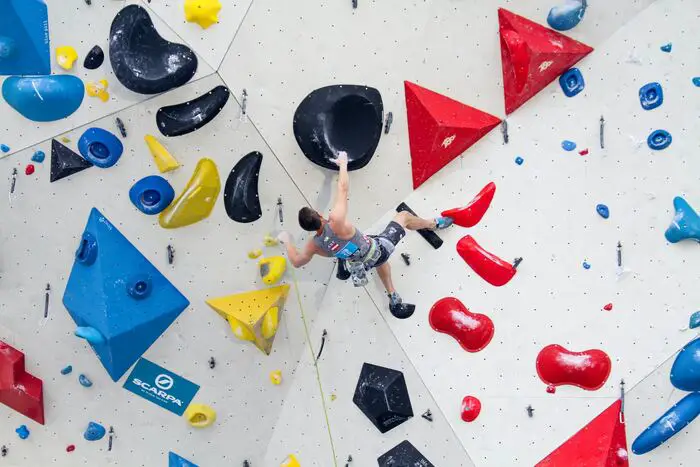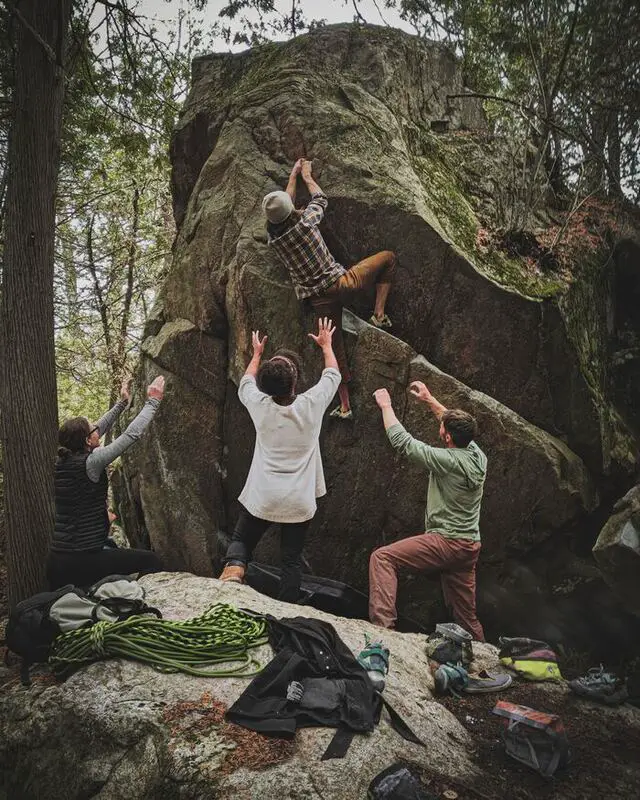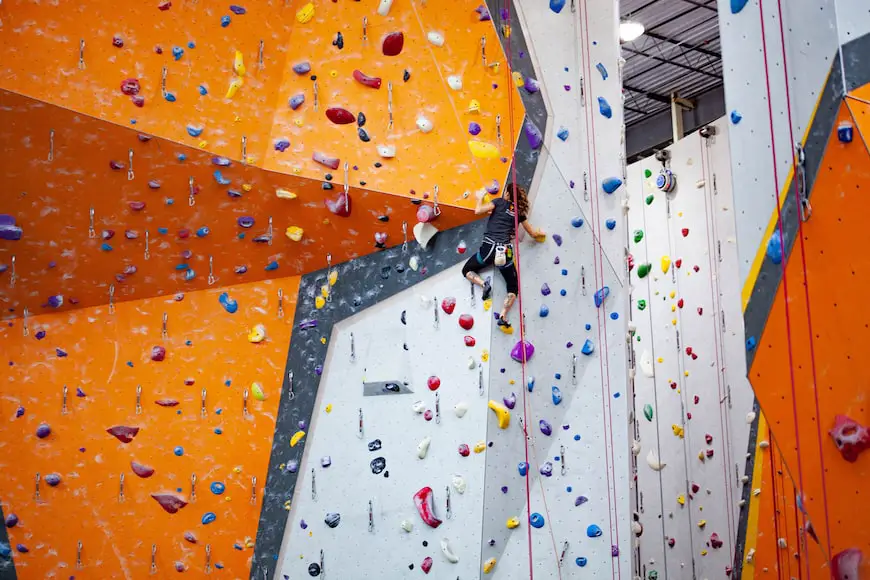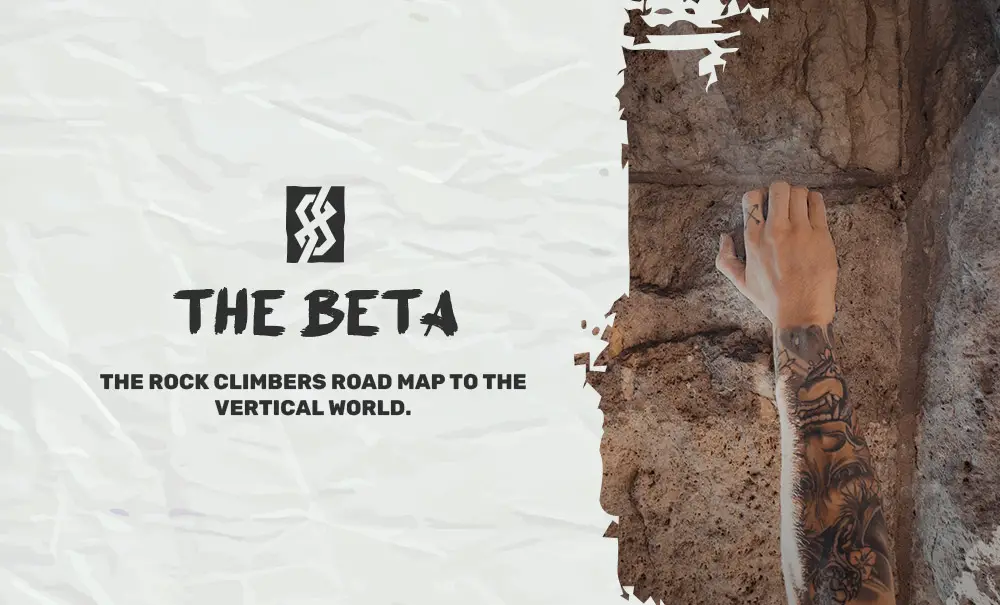You’ve just laced up your first pair of climbing shoes, feeling the unfamiliar grip beneath your feet. The local climbing gym surrounds you, echoing with the adrenaline-filled laughter and encouraging shouts of fellow climbers. Suddenly, you find yourself face to face with the towering climbing wall, a vertical maze of holds and challenges. You take a deep breath, brace yourself, and commence your ascent.

Inevitably, gravity does what it does best – you stumble, you falter, and you fall. As you dust yourself off, the initial thrill gives way to a sense of defeat. Just as you’re contemplating your retreat, an unexpected voice interrupts your thoughts. A fellow climber, with an outstretched hand and a kind smile, asks, “Need some beta?”
Welcome, my friend, to the fascinating linguistics of the vertical world – the intriguing puzzle of climbing terminology.
As a climber, you join an exclusive club of adventurers who communicate in a cryptic code of their own. This unique dialect is a mix of dictionary-defined words and insider jargon, filled with terms like ‘crux‘ and ‘beta’. Spend enough time echoing the rhythms of the climbing gym and you’ll inevitably find yourself fluently speaking this language.
While the term ‘crux’ may be frequently tossed around, for the purpose of this article, we’re going to delve into the depths of the term ‘beta’ in climbing. So strap on your harness, chalk up your hands, and let’s explore the world of the ‘beta’ climbing term. Get ready to understand, “What is beta in climbing?” Here we go!
Beta Climbing Term
The word ‘beta’ came from ‘Betamax’, the old video format before VHS. Jack Mileski, a 70’s climber, started videotaping himself on routes and the word ‘beta’ started being used in the way we know it today.
Rock & Ice Magazine describes the word beta as: “Tips on how to do a climbing sequence, as in, “There’s a jug off to the left above the third bolt.” Usually told to you by someone who has done the route or problem”.
They are correct, but beta means so much more than just pointing to a hold the climber on the wall might have not seen. Beta to its core refers to a tip on a sequence, as in where to place your foot or where the holds are.

In saying that, when climbing becomes more complicated, beta could also refer to how to do a climb. From body position to using a heel hook or positioning your hand better on a hold. Beta can also refer to other things outside of the physical aspects of climbing, such as the length of the route, safety issues, gear tips, and more.
Beta For Climbing
Beta in climbing can go from ‘put your foot here’ or ‘use the hold with your left hand’ to ‘when you get to this hold, take the three middle fingers and move your hip slightly to the left and then you get to a great hold!’. Beta for climbing could also refer to resting spots, ideas, etc.
Beta For The Route
Since climbers are using this word for everything that says ‘prior knowledge’, you’ll find yourself getting beta that is not sequence-related. In this case, beta could be about the length of the route, its conditions, sun exposure, and more. This can help you get ready to adjust your schedule, organize your gear, and be prepared for your project.

Safety Beta
Whether it’s a boulder, a sport climb or an alpine ascend safety is always part of the game and the most important. Safety beta could be from how to place the crash pads, a dangerous clipping position, or loose rocks.
‘I’m Flying to Margalef, Do You Have Beta?’
This one is just a general one you might hear around the cafe in your local gym. Since it’s a complete guide, beta in this context would mean ‘tell me everything you can’ – where to sleep, how to get there, the best crags, and where is the best pizza, ice cream, and beer after a long climbing day.
Should You Always Give or Take Beta in Climbing?
Yes and no. This depends on the climber and what they are trying to get out of the climb they are doing. Are they onsighting or do they want to flash it?
- Flash vs Onsight. Both mean to climb a route or a boulder on the first try, but with one major difference – onsight would be walking up to the route and trying it without any prior knowledge of the climb, and flash means having knowledge of some of the holds, the sequences, or basically, having beta on the route. For some climbers, it’s very important to try and onsight a route, so having someone sharing beta might ruin it. While at the same time, some climbers would love to go for the flash knowing the beta.
- Climbers like to find their own way. For some climbers, it’s part of the game. Falling, failing, trying, and figuring out their best way to go up. On the other hand, if you see a miserable climber stuck in the middle of the wall, crying for beta, then yeah, be a good guy and give them some beta.
What suits one climber doesn’t have to suit another one. And that’s important to remember. Climbers come in all sizes, strengths, and weaknesses. There is no ‘one beta’ or one correct way to do a climb.
What is Beta Spraying?
Beta spraying, as colorful as it sounds, is just as it appears. Picture this – you’re already engrossed on the wall and suddenly, you’re showered with a hailstorm of unsolicited advice. The cacophony of voices around you shouting various tips and strategies can create a whirlwind of confusion – an unexpected storm on your vertical journey. Quite maddening, isn’t it?

Or perhaps you’re at the cusp of your project, ready to tackle a challenging route that you’ve spent countless hours planning. Then, as if on cue, an enthusiastic friend decides to beta spray – sharing a treasure trove of their own ‘unmissable’ beta. Regardless of their good intentions, this deluge of unsolicited insights can disrupt your flow.
While at times beta spray may prove to be helpful, often it ends up being a source of exasperation. Beta spraying is a double-edged sword in our climbing dialogues.
Beta & Grades
Grades for routes are given based on the easiest beta, or way, to climb up them. Finding new beta for a route can change its grade entirely. A new beta could be another hold, a better resting position, or a knee bar that would make the climb slightly easier.
A good example of this would be the story of ‘Bibliographie’ which was first graded a 9c by Alex Megos, and then got downgraded by Stefano Ghisolfi after finding an easier beta for the crux.
Beta in Climbing
As climbers, we navigate not just the physical mountains but also a rich linguistic landscape. The right use of our peculiar terminology – the perfect ‘beta’ – could be the tipping point between conquering the climb or facing a fall, between a day of triumph and one of trials.
The application of the term ‘beta’ in the climbing world is as varied and diverse as the routes we explore. Ultimately, however, its purpose is unified – to extend a helping hand, to aid our fellow climbers in reaching the summit of their projects.
Just remember, while the exchange of ‘beta’ is part of our shared camaraderie, it’s crucial to be respectful and avoid ‘beta spraying’.



